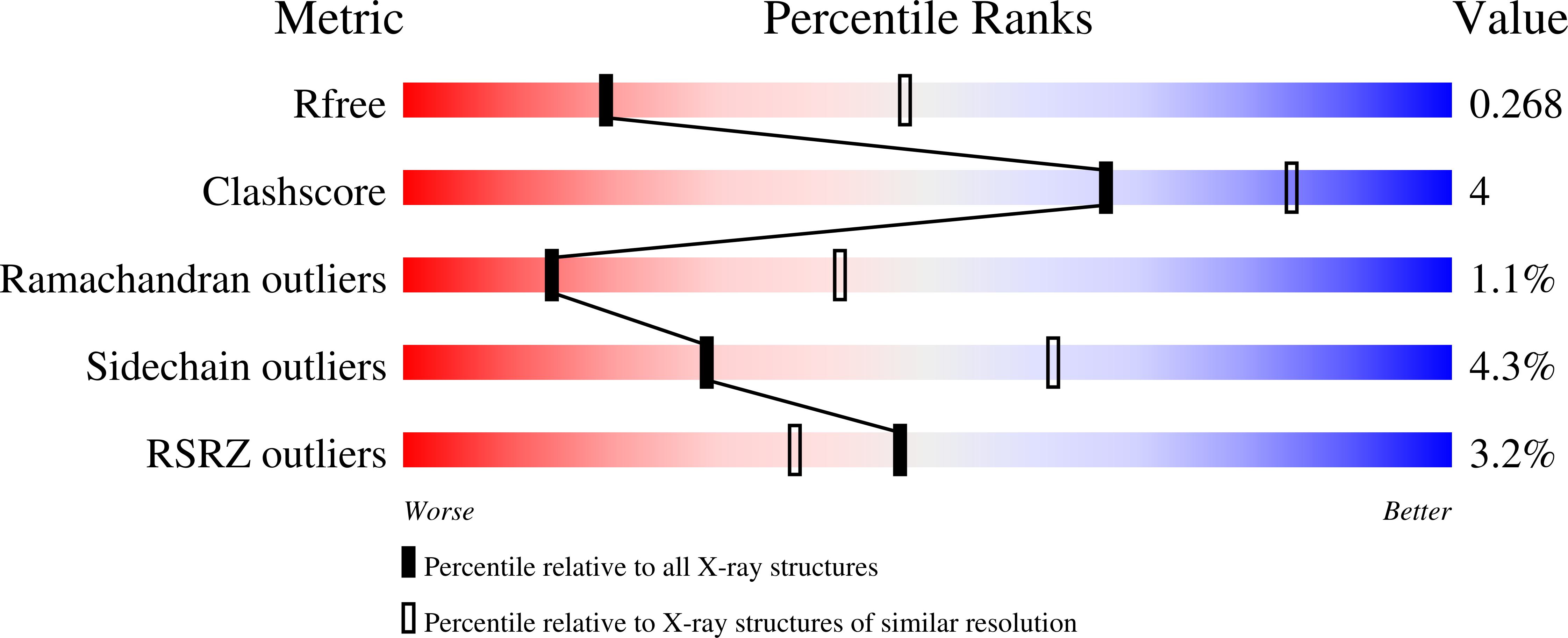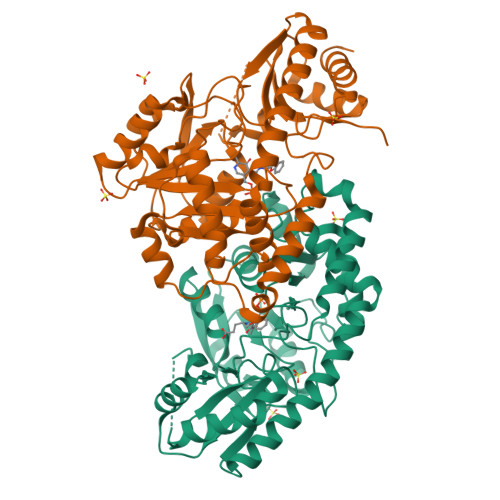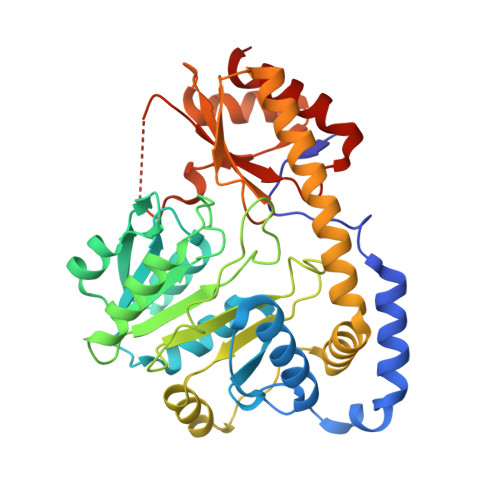(S)-4-Amino-5-phenoxypentanoate designed as a potential selective agonist of the bacterial transcription factor GabR.
Catlin, D.S., Reidl, C.T., Trzupek, T.R., Silverman, R.B., Cannon, B.L., Becker, D.P., Liu, D.(2020) Protein Sci 29: 1816-1828
- PubMed: 32557944
- DOI: https://doi.org/10.1002/pro.3905
- Primary Citation of Related Structures:
6UXZ - PubMed Abstract:
Addressing molecular recognition in the context of evolution requires pursuing new molecular targets to enable the development of agonists or antagonists with new mechanisms of action. Disruption of transcriptional regulation through targeting transcription factors that regulate the expression of key enzymes in bacterial metabolism may provide a promising method for controlling the bacterial metabolic pathways. To this end, we have selectively targeted a bacterial transcription regulator through the design and synthesis of a series of γ-aminobutyric acid (GABA) derivatives, including (S)-4-amino-5-phenoxypentanoate (4-phenoxymethyl-GABA), which are based on docking insights gained from a previously-solved crystal structure of GabR from Bacillus subtilis. This target was selected because GabR strictly controls GABA metabolism by regulating the transcription of the gabT/D operon. These GabR transcription modulators are selective for the bacterial transcription factor GabR and are unable to bind to structural homologs of GabR due to distinct steric constraints. We have obtained a crystal structure of 4-phenoxymethyl-GABA bound as an external aldimine with PLP in the effector binding site of GabR, which suggests that this compound is capable of binding and reacting in the same manner as the native effector ligand. Inhibition assays demonstrate high selectivity of 4-phenoxymethyl-GABA for bacterial GabR versus several selected eukaryotic enzymes. Single-molecule fluorescence resonance energy transfer (smFRET) experiments reveal a ligand-induced DNA distortion that is very similar to that of the native effector GABA, suggesting that the compound functions as a potential selective agonist of GabR.
Organizational Affiliation:
Department of Chemistry and Biochemistry, Loyola University Chicago, Chicago, Illinois, USA.




















